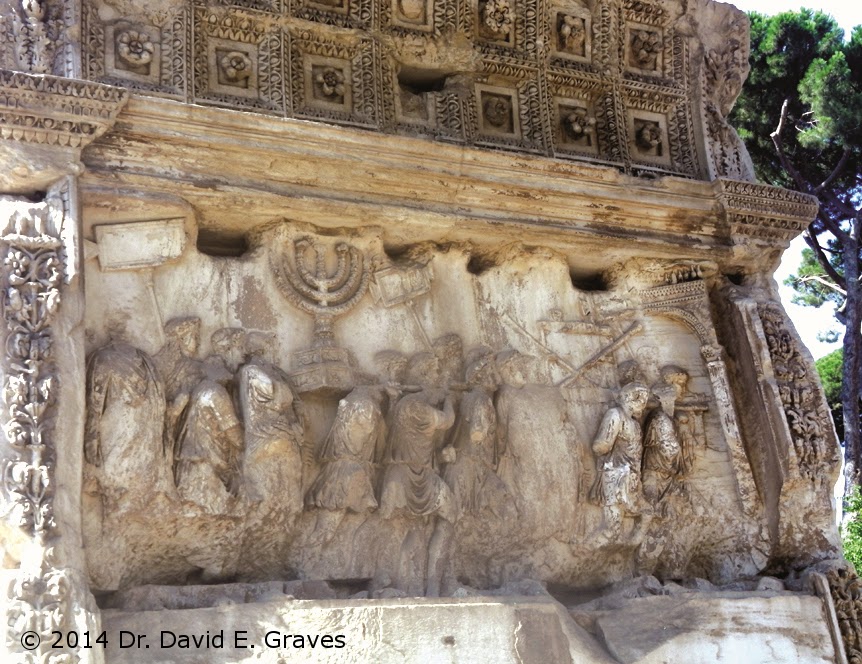 |
| Relief on the arch of Titus, Rome depicting the removal of the menorah, table of the presence and silver trumpets from the temple in Jerusalem following its destruction in 70 AD by the Romans |
 |
| Arch of Titus, Rome |
Vespasian came from Rome in AD 66 to suppress a Jewish revolt. His son Titus took over the campaign and using four legions captured Jerusalem in AD 70 and following the fall of the Masada fortress in AD 73 the revolt was finally over.
The honourific Arch of Titus (first cent.) located at the highest point on the Via Sacra in Rome, was constructed by his younger brother Domitian in AD 81 in commemoration of Titus’ victories, including the siege of Jerusalem in 70 AD.1. This 15m high arch is the oldest surviving example of a Roman arch. This arch has provided the inspiration for many famous arches since the 16th cent. including the famous Arc de Triomphe in Paris, France. 2.
The inside of the arch contains two impressive panels with reliefs. The first depicts Titus riding in a chariot accompanied by the Goddess Victoria and the Goddess Roma. The southern relief depicts the Roman’s procession carrying the spoils plundered from the Second Temple in Jerusalem. The menorah is portrayed as it was in the Temple in the first cent. Also displayed in relief are the two silver trumpets (which the Israelites called Israel and Jericho) and the table of the presence. These objects were originally gilded with gold, with a blue background. There was a Latin inscription in bronze which read
“The Roman Senate and People to Deified Titus, Vespasian Augustus, son of Deified Vespasian.” 3.In the 11th cent. the arch was integrated into a fortress but in 1821 restored by Giuseppe Valadier.
Footnotes
- 1. William Knight, The Arch of Titus and the Spoils of the Temple, an Historical Lecture (Charleston, SC: BiblioBazaar, 2010), 100.
- 2. Fred S. Kleiner, Gardner’s Art Through the Ages: Backpack Edition, Book 1, vol. 1, 13th ed. (Cengage Learning, 2009), 182–83.
- 3. Paul Artus, Art and Architecture of the Roman Empire (Bellona Books, 2006), 45–48.
David E. Graves, Key Themes of the Old Testament: A Survey of Major Theological Themes (Moncton, N.B.: Graves, 2013), 263-64.



No comments:
Post a Comment